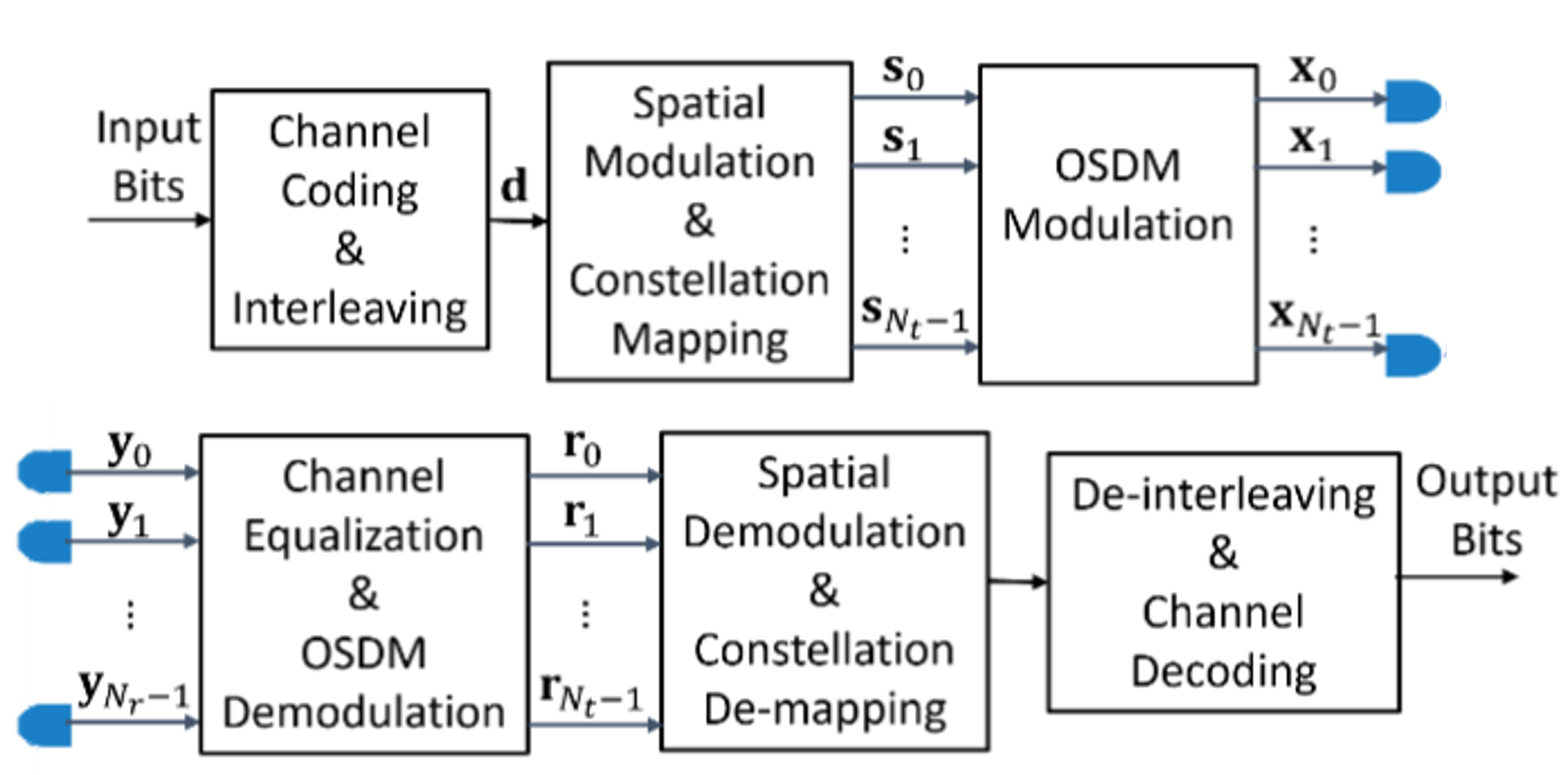Spatial Modulation-based Orthogonal Signal Division Multiplexing for Underwater ACOMMS
Research | | Links:

Orthogonal Signal Division Multiplexing (OSDM) has shown great robustness against multipath and Doppler effects in underwater acoustic channels, while however having a low spectral efficiency. In this work, a novel transmission method, named Spatial Modulation-based OSDM (SM-OSDM), is proposed to improve the spectral efficiency while keeping the Bit Error Rate (BER) low, where multiple transducers are utilized at the transmitter side but only one is active in each time slot. At the transmitter side, the channel coding and interleaving are first applied to the input bit sequence. Then the coded bits are modulated with spatial modulation and constellation symbols are placed to generate different symbol streams for different transducers. After the OSDM modulation, the SM-OSDM signals for different transducers are transmitted. At the receiver, the channels are estimated by analyzing the pilot sequences. After channel equalization and OSDM demodulation, the spatial demodulation and constellation de-mapping is done to get the demodulated bits. Finally, the output bits are obtained by de-interleaving and performing channel decoding.

Personnel:
- Zhuoran Qi, PhD candidate, ECE Department, Rutgers University (Link to Profile)
- Dr. Dario Pompili, PI, ECE Department, Rutgers University, New Jersey (Link to Profile)
Publications:
- Z. Qi and D. Pompili, “Spatial Modulation-based Orthogonal Signal Division Multiplexing for Underwater ACOMMS,” 2022 Sixth Underwater Communications and Networking Conference (UComms), Lerici, Italy, 2022, pp. 1-5, doi: 10.1109/UComms56954.2022.9905682.

